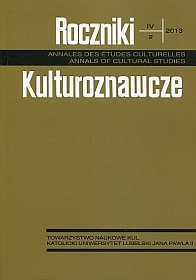“I Felt So Tall Within”: Anthropology in Slave Narratives
Abstract
“What does it mean to be human in the face of slavery?” I will examine three autobiographical documents from African-American slaves of the 18th/19th century (Sojourner Truth, Victoria Albert, and Frederick Douglass) and ask: do they allow for new insight into anthropology? Slaves are able to be human in the face of physical and ideological denial of their humanity. Humans can separate their bodily conditions from themselves. Deprivations of all kinds show, paradoxically, what is essential to human beings: in this study, religion, name, and resistance. I will also show to what extent René Girard’s anthropology applies to the structure of slavery.
References
Blum, Paul Richard. Philosophieren in der Renaissance. Stuttgart: Kohlhammer, 2004.
Blum, Paul Richard. “Rhetoric is the Home of the Transcendent: Ernesto Grassi’s Response to Heidegger’s Attack on Humanism.” Intellectual History Review 22 (2012), 261-287.
Boxhill, Bernard. “Two Traditions in African American Political Philosophy.” The Philosophical Forum 24, No. 1-3, Fall-Spring 1992-93, 119-135.
Boxhill, Bernard. “The Fight with Covey.” In Lewis R. Gordon (ed.). Existence in Black. An Anthology of Black Existential Philosophy. New York/London: Routledge, 1997, 273-290.
Douglass, Frederick. Narrative of the Life of Frederick Douglass, an American Slave. Boston: Anti-Slavery Office, 1847.
Douglass, Frederick. “The Nature of Slavery.” In Howard Brotz (ed.). African-American Social and Political Thought 1850-1920. New Brunswick, N.J.: Transaction Publishers, 1992.
Gilbert, Olive. Narrative of Sojourner Truth, a Northern Slave, Emancipated from Bodily Servitude by the State of New York, in 1828: Electronic Edition, http://docsouth.unc.edu/neh/truth50/truth50.html
Girard, René, and Benoît Chantre. Battling to the End. Conversations with Benoît Chantre. East Lansing: Michigan State University Press, 2010.
Girard, René, and Benoît Chantre. Things Hidden since the Foundation of the World. Stanford: University Press, 1987.
Girard, René, and Benoît Chantre. I See Satan Fall Like Lightning. Maryknoll: Orbis, 2001.
Girard, René, and Benoît Chantre. Evolution and Conversion : Dialogues on the Origins of Culture, London: T & T Clark (Continuum), 2009.
Gordon, Lewis R. Existentia Africana. Understanding Africana Existential Thought, New York/ London: Routledge, 2000.
Harriss, M. Cooper. “Where is the Voice Coming from? Rhetoric, Religion, and Violence in The Confessions of Nat Turner.” Soundings 89 (2006): 135-170.
Higgins, Thomas J. Man as Man. The Science and Art of Ethics. Milwaukee: Bruce, 1949.
Kohn, Margaret. “Frederick Douglass’s Master-Slave Dialectic”, The Journal of Politics, 67, No. 2 (May, 2005): 497-514.
Painter, Nell Irvin. Sojourner Truth: A Life, a Symbol. New York: W.W. Norton, 1996.
Reineke, Martha. “Mimetic Violence and Nella Larsen’s Passing: Toward a Critical Consciousness of Racism.” Contagion: Journal of Violence, Mimesis, and Culture, 5, Spring 1998: 74-97.
Reinhardt, Mark. “Who Speaks for Margaret Garner? Slavery, Silence, and the Politics of Ventriloquism.” Critical Inquiry 29, no. 1 (2002): 81-119.
Reinhardt, Mark. Who Speaks for Margaret Garner?, Minneapolis: University of Minnesota Press, 2010.
Rogers Albert, Octavia V. The House Of Bondage, or: Charlotte Brooks and Other Slaves. New York: Hunt & Eaton, Cincinnati: Cranston & Stowe, 1890. Reprint: New York: Oxford University Press, 1988. Online available at http://docsouth.unc.edu.ezp.lndlibrary.org/neh/albert/menu.html and http://digilib.nypl.org/dynaweb/digs/wwm972/@Generic__BookView
Spradley, James P., and George E. McDonough (eds.). Anthropology through Literature. Boston: Little, Brown and Company, 1975.





